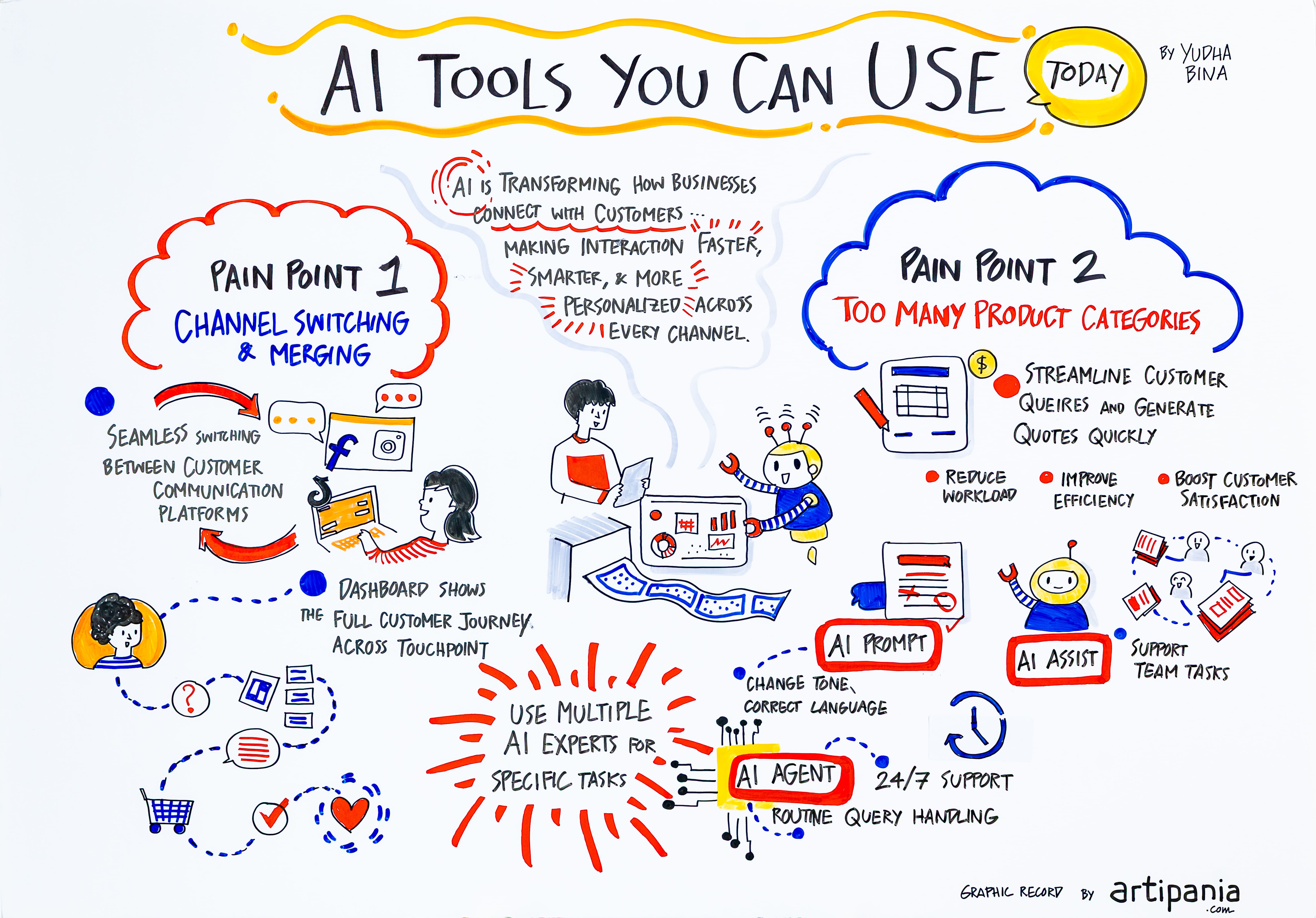EXECUTIVE BOTTOM LINE
Adopting omnichannel AI chatbots and workflow automation offers print businesses a strategic edge by streamlining customer engagement, reducing operational friction, and enabling scalable, data-driven service—while maintaining human oversight to mitigate risk.
STRATEGIC CONTEXT
As the print industry faces rapid digital transformation and rising customer expectations for seamless, instant service, integrating AI-driven omnichannel solutions is becoming a competitive necessity. This session builds on broader Dscoop themes of automation, customer-centricity, and the shift toward platform-based business models, highlighting how practical AI adoption can bridge the gap between legacy processes and new market demands.
KEY INSIGHTS
· Specialized, product-specific AI agents outperform generic solutions: “Don’t create AI in one long word document for all your products, just separate it into many different products and every product have different starting question.”
· Human-in-the-loop remains essential: AI agents can automate routine queries, but human oversight is critical to ensure accuracy and handle exceptions, especially as AI can “sometimes still throw away or get delusional.”
· No-code, drag-and-drop AI platforms lower the barrier to entry, enabling non-technical teams to deploy and iterate on AI workflows rapidly.
· Real-time integration of customer data across channels (WhatsApp, Instagram, email, etc.) provides a unified view of the customer journey, supporting both sales and service optimization.
TACTICAL TAKEAWAYS
· Start with clear endpoints: Define the desired output (e.g., quotation templates) and work backward to design AI workflows.
· Use modular knowledge sources: Upload product-specific data (pricing, templates) as separate files for each AI agent, enabling easy updates and specialization.
· Leverage translation and sentiment analysis features to expand into new markets and improve service quality without increasing headcount.
· Test and iterate with internal teams before full deployment; persistent experimentation and feedback loops are key to successful adoption.
STRATEGIC IMPLICATIONS
· Businesses that master omnichannel AI integration can deliver faster, more consistent customer experiences, positioning themselves as agile, tech-forward partners.
· Modular AI agent design enables rapid scaling and adaptation to new products or markets, supporting business diversification.
· Real-time analytics and unified dashboards empower data-driven decision-making, reducing manual reporting and enabling proactive management.
· Early adoption of no-code AI tools can create a sustainable competitive advantage as industry standards evolve.
HIDDEN CONNECTIONS
· The shift to modular, workflow-driven AI mirrors broader trends in print automation and mass customization discussed in other Dscoop sessions.
· Integrating AI with ERP and payment systems foreshadows a future where print businesses operate as digital platforms, not just service providers.
· The emphasis on human oversight and iterative learning connects to industry-wide concerns about AI reliability and the need for continuous upskilling.
QUESTIONS TO CONSIDER
· How can your organization balance automation with the need for human judgment in customer interactions?
· What legacy processes or data silos could be eliminated by adopting omnichannel AI solutions?
· Are you leveraging no-code AI tools to empower non-technical staff and accelerate innovation?
· How might modular AI agent design enable your business to respond faster to market changes or customer needs?




